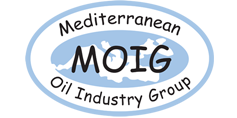
18 February 2021, the MOIG Director participated to webinar; via electronic conferencing platform; titled “Knowledge Base : Marine Booms” presented by Mark Orr; Executive Director of UK & Ireland Spill Association Ltd; Paul Rayner, Sales Director from VIKOMA and Mark Shephred; Emergency Response Manager from NRC. This webinar was supported by OAMPS.
Mark Orr introduced the knowledge base and UK & Ireland Spill Association vision for 2021. He underlined that UK & Ireland Spill Association is planning to organize 10 marine knowledge base webinars in 2021. He also presented an overview on the knowledge base topics and dates of the next webinars scheduled to occur during the two next months; which are the followings:
27 February 2021 : MV Wakashio Part 3 - Update and the cleanup Marine Booms that will be presented by UKEirSpill and Poleyco
10 March 2021 : Marine Plastic Pollution what is currently being done and by whom that will be presented by UKEirSpill
Late March 2021 : MV Wakashio Part 4 - The remediation and some further thoughts that will be presented by UKEirSpill
22 April 2021: Inland Spill Day
Paul Rayner started by giving an overview about VIKOMA, the history, the accreditation system in place and the services provided in the design, development, sales, manufacturing, installation, commissioning and training on spill response equipments. He then presented all the components of an oil spill booms and their applications such as the emergency response (short and long deployment), permanent deployment, land based containment, sea, shoreline, rivers/lakes, land an industrial. He also described some basic characteristics to considerer in an oil spill booms, for example: Safety, simplicity, ease of use and cleaning as well as towing, oil containment efficiency compatibility with other booms systems, weight, and resistance to oil/salt/fresh water / UV light an abrasion, salt.
Paul Rayner presented many types of oil spill booms such as fence, air filled, foam filled, self inflating, shoreline sealing, POD, fire, debris and chemical resist. He explained the main characteristics of each boom highlighting both positive and negative points: Simple to use, quick to deploy, strong, flexibility, easy to clean and repair, small storage volume, low training requirements; for positive points, bulky-high storage volume, weight, difficult to handle and recover, rigid-poor flexibility, no good in waves, ease to damage, cost, high training requirements; for negative points. He then described the type of materials, connectors and storage of oil spill booms and a list of considerations to be taken into account such as: safe and ease of use, weight, strength, size, portability, resistance, cost, cleaning, training and maintenance requirements. He concluded by presenting some repair methods of oil spill booms based on using cold glue, hot air, mechanical seals and stick patches.
Mark Shephred started by explaining the use of boom highlighting that containment at source minimizes the spreading risk of spill to sensitive areas. He talked about shoreline operations and emphasized the importance of pre-planning to protect shorelines. He then presented all the possible configurations of offshore booms in “U”, “V”, and “J”; and underlined that offshore operations required suitable vessels and trained and competent personnel.
Mark Shephred stated that proper pre-planning is paramount to a successful response and indicated that some information shall be known and considered in advance to ensure a good pre-planning, and thus an effective response such as the operating platforms or environments where the deployment is taking place, the jetties or shorelines to operate from, the availability of support infrastructures (crane and forklift). He emphasized some safety issues to consider related to weight, noise, lifting arrangements, hydraulic lines, trained & competent responders and the use of volunteers. He concluded with a case study on training deployment of 250 m offshore boom which showed some weaknesses related to inexperience of the team, the positioning of the boom on deck, the type vessel used and the equipment damage.
